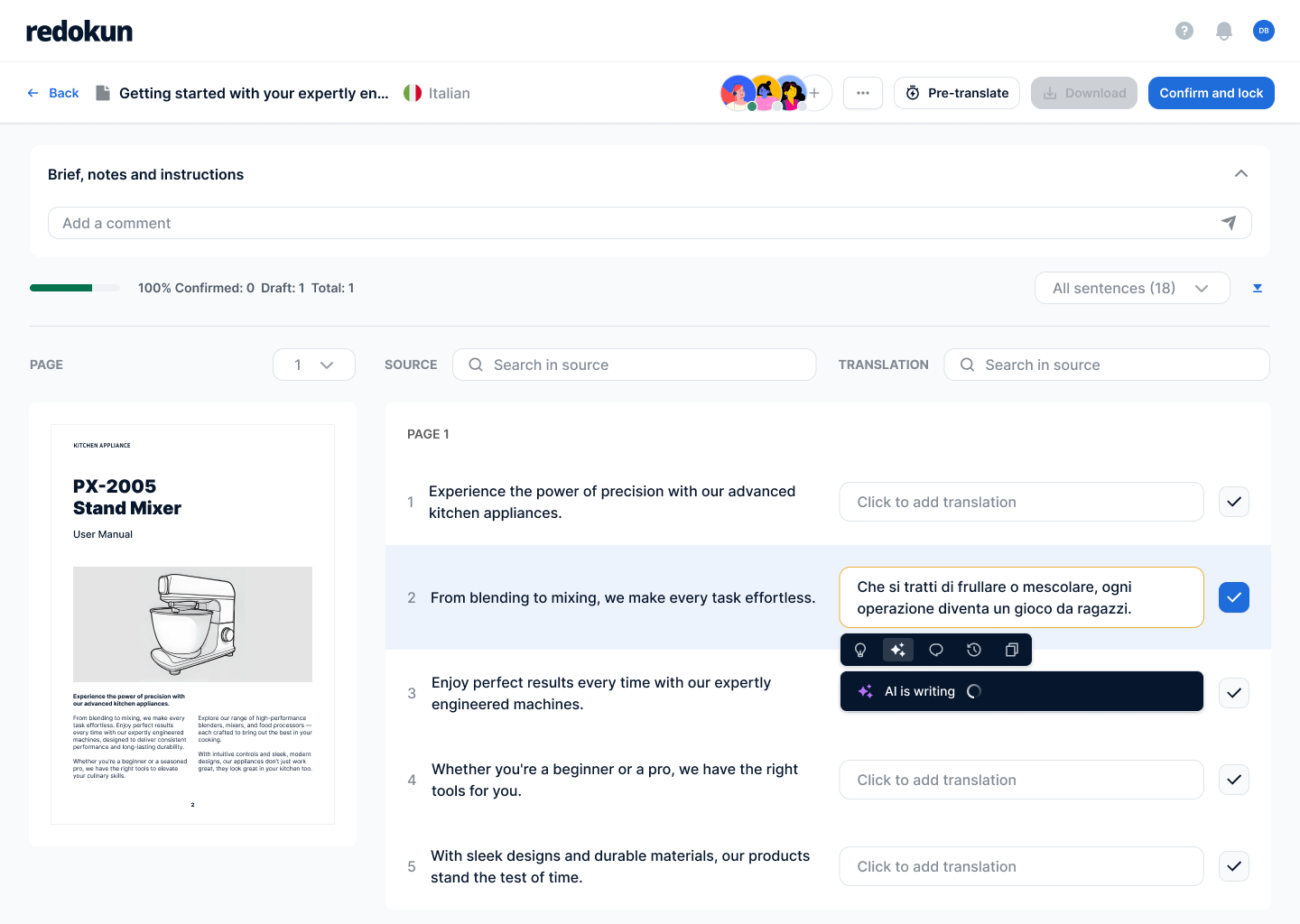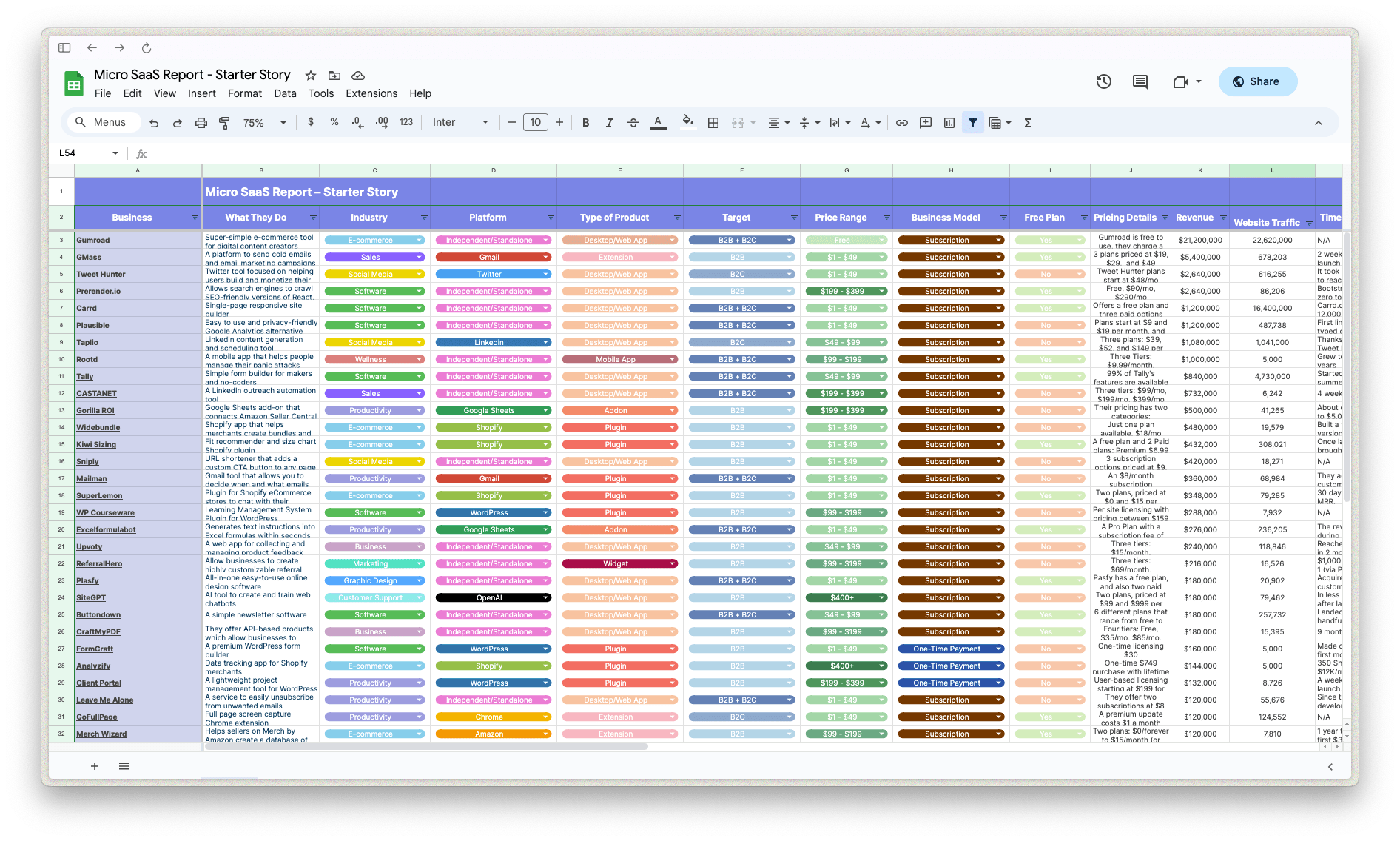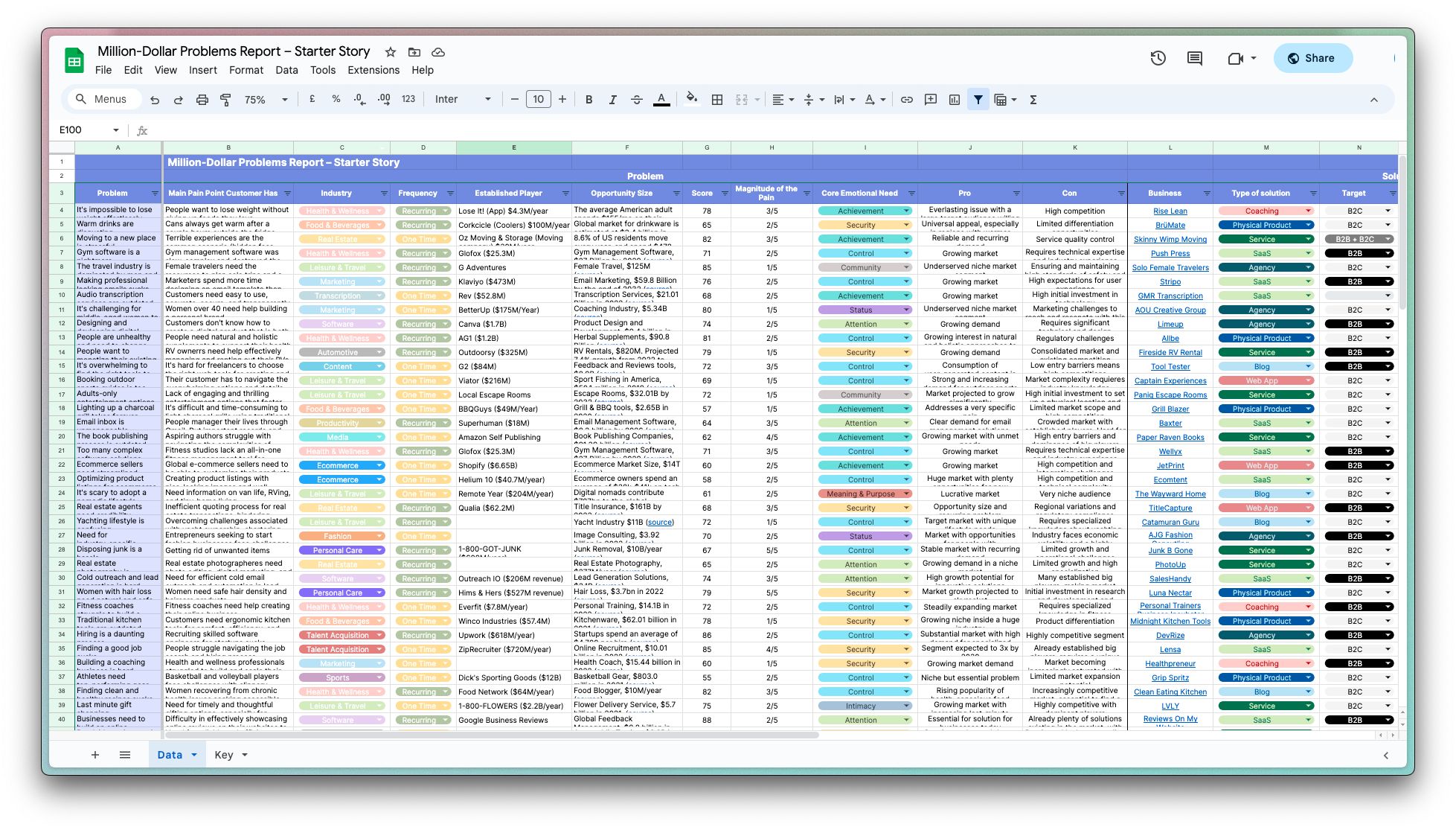My Document Translation App Makes $125K/month
Who are you and what business did you start?
Hey! I’m Stefano, co-founder of Redokun.com, a SaaS that streamlines translation workflows for marketing and localization teams.
Our clients are mostly B2B and manufacturing companies that work across multiple languages and need scalable translation processes.
Because Redokun was built by people who worked in this environment, it introduces a complete workflow that transforms how teams collaborate. At every step, Redokun replaces manual, fragmented tasks with a faster and more organized way of working.
Upload your document, invite your translators or partners, and in minutes you’re managing everything from AI translations to approved text memories in one shared workspace.


Download the report and join our email newsletter packed with business ideas and money-making opportunities, backed by real-life case studies.

Download the report and join our email newsletter packed with business ideas and money-making opportunities, backed by real-life case studies.

Download the report and join our email newsletter packed with business ideas and money-making opportunities, backed by real-life case studies.

Download the report and join our email newsletter packed with business ideas and money-making opportunities, backed by real-life case studies.

Download the report and join our email newsletter packed with business ideas and money-making opportunities, backed by real-life case studies.

Download the report and join our email newsletter packed with business ideas and money-making opportunities, backed by real-life case studies.

Download the report and join our email newsletter packed with business ideas and money-making opportunities, backed by real-life case studies.

Download the report and join our email newsletter packed with business ideas and money-making opportunities, backed by real-life case studies.








